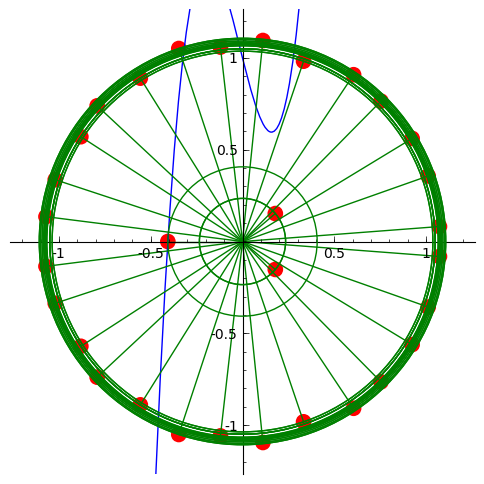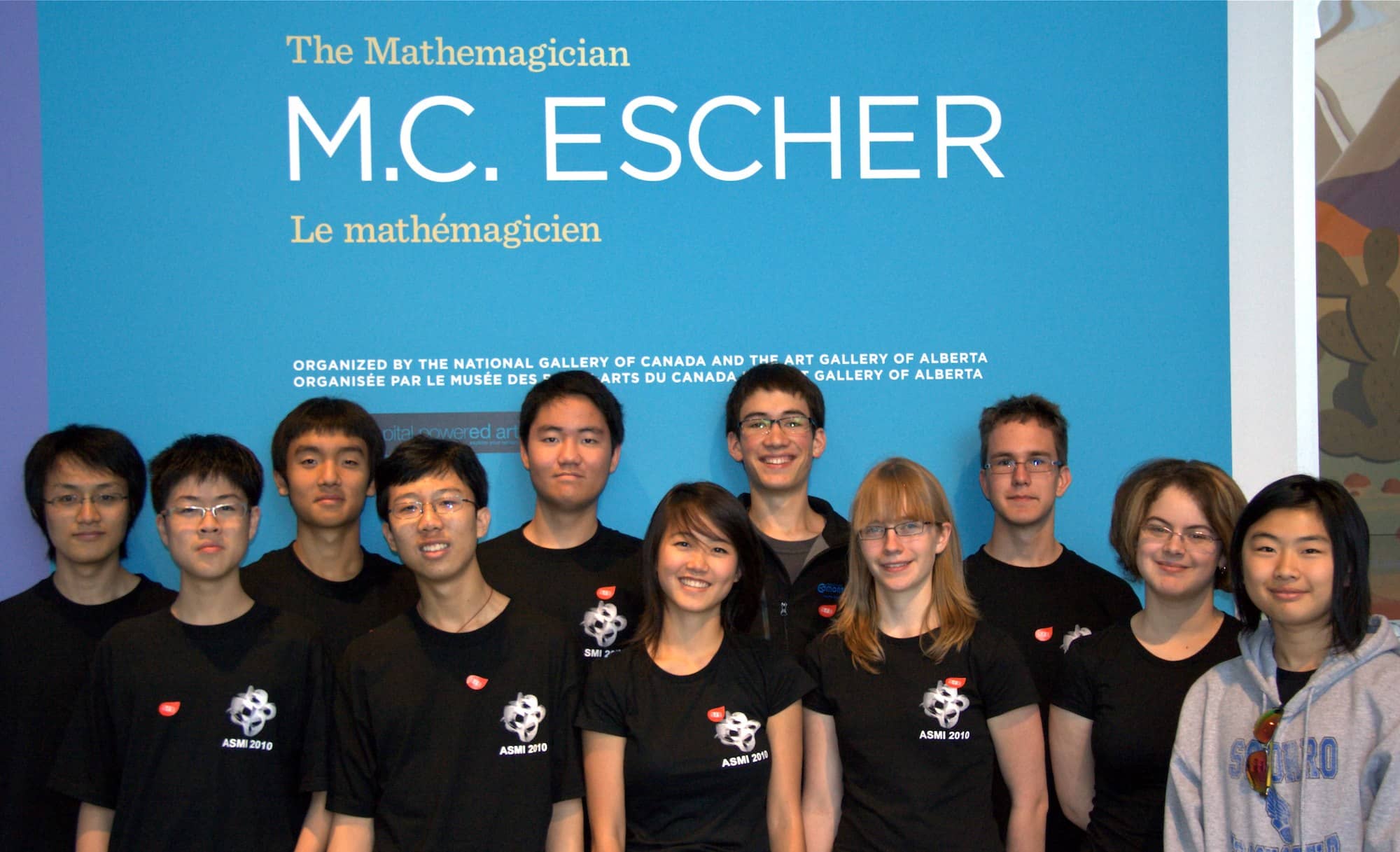
Polynomial Roots Graphed by Computer
In 2016 we expect to have lecture series on the following topics, accompanied by research projects and computer labs for mathematical exploration and professional typesetting of the reports.
Mathematical Objects in Interaction (by Charles Doran)
What is a mathematical “object”? What properties do these objects possess? What are they good for? We will introduce and explore a wide range of mathematical structures and see how they find application in the world around us.
Prof. Charles Doran is the founding Director of ASMI, and former Director of the University of Alberta Site of the Pacific Institute for the Mathematical Sciences. Prof. Doran’s research involves “Geometry and Physics”, specifically the mathematics underlying string theory. He is a graduate of Harvard University (A.B. 1992, A.M. 1993, Ph.D. 1999) and taught at Penn State, Columbia University, and the University of Washington before joining the University of Alberta faculty. Prof. Doran held the McCalla Professorship in the Faculty of Science (2013-2014) and is currently the Visiting Campobassi Professor of Physics at the University of Maryland (2015-2017). He was awarded the Merton M. Hasse Prize of the Mathematical Association of America (2015) for his expository work.
Optimization (by Andrey Novoseltsev)
Very often one wants to optimize (i.e. maximize or minimize) certain quantity (time, money, used resources) subject to constraints on the available resources. We’ll start with solving 2-dimensional linear optimization problems graphically, then introduce a widely used Simplex Method for arbitrary dimensions. Along the way we’ll make use of matrices, vectors, and mathematical software system Sage.
Andrey Novoseltsev got his Ph.D. from the University of Alberta in 2011 where he now works as a postdoctoral fellow and an instructor. His primary focus is on toric geometry related to mirror symmetry and Sage development for toric geometry as well as teaching tools for various subjects. In particular, over the last few years he has written an optimization module for Sage allowing students to focus on high-level ideas instead of tedious arithmetic.
A Taste of Graph Theory (by Xi Chen)
Consider the following problems and facts:
- Given a city map, is it possible to traverse every street exactly once without repetition?
- Among any six people, there must be three mutual friends or three mutual strangers.
- Every map can be colored in four colors.
- One can place 5 queens on a standard chess board such that every vacant square can be captured by one queen.
All these problems can be solved using graph theory. In this series of lectures, I will give an introduction to this fascinating branch of mathematics. I will make problem solving the center of my lectures.
Xi Chen obtained his PhD in mathematics at Harvard University and is currently an associate professor at University of Alberta. His research area involves the study of polynomials. Outside of mathematics, he enjoys various board games.
Plus a selection of mathematics inspired movies!
The ASMI program is designed to encourage creative and critical thinking about mathematics and the multitude of ways it can be applied. Topics from the past years include:
- Cryptography
- Differential Equations
- Geometry
- Groups and Sets
- Math in Art and Design
- Mathematical Physics
- Number Systems
- Number Theory
- Optimization
- Problem Solving
- Typesetting with LaTeX
- Working with Mathematical Software Sage
The program also includes ample free time for socialization, relaxation, and games.

2010 Participants at the Art Gallery of Alberta
